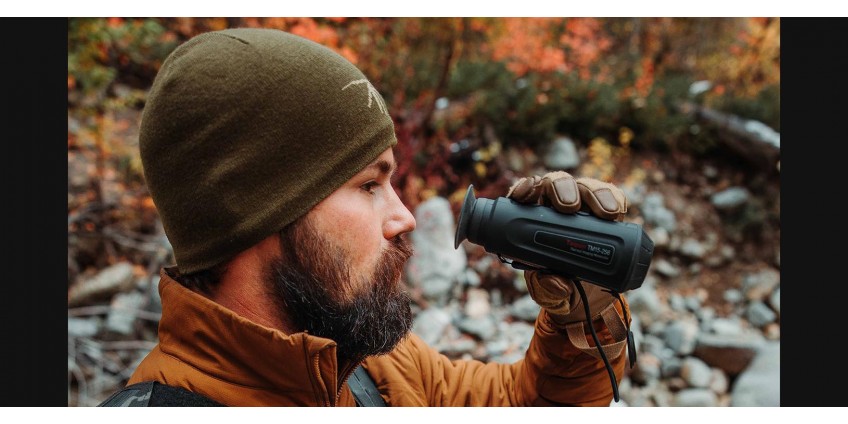
This product is not exportable outside the United States.
By adding this item to cart, you agree and acknowledge the Export Policy and confirm that you are a person in the United States with no intentions to illegally export the device.
This product is not exportable outside the United States.
By adding this item to cart, you agree and acknowledge the Export Policy and confirm that you are a person in the United States with no intentions to illegally export the device.


0

0


If you are involved with water in any way, maybe you are an amateur fisherman, you should consider getting thermal imaging. It's no secret that thermal imaging technology is now used in many applications: hunting, animal surveillance, security, search and rescue, medicine, and even construction. Thermal imaging cameras are being improved every year, and these devices are becoming more affordable for everyday use.
A thermal imaging camera is a measuring device that works to determine the temperature background, which is reflected in the form of infrared radiation hidden from the human eye. Thus, a thermal imaging camera displays the monitored object against a contrasting background, allowing the user to see the location of the monitored object. Today, thermal imaging technology is considered the most versatile night vision optics because it is based on a digital matrix, has a wide range of applications, and can be used both during the day and night.
Thermal imaging is used in various scenarios - utility and energy companies use it to see where a house might be losing heat (through door and window cracks). Police helicopters use it to find suspects at night. Weather stations use it to track storms and hurricanes. In the medical field, to diagnose various diseases. Thermal imaging allows you to see the heat radiated by an object. Thermal imaging cameras record the temperature of different things in the frame and then assign a shade of color to each temperature, allowing you to see how much heat an object emits compared to the objects around it. Cooler temperatures often give a shade of blue, purple, or green, while warmer temperatures are assigned a shade of red, orange, or yellow. The hotter the object, the more infrared radiation it produces. Thermal imaging cameras can see this radiation and convert it to an image that we can see with our eyes, just like a night vision device can capture invisible infrared light and convert it to an image that our eyes can see.
Inside the thermal imaging camera are many tiny measuring devices that capture infrared radiation, called microbolometers. The microbolometer records the temperature and then assigns the appropriate shade to the pixel on the screen. That's why most thermal cameras have a shallow resolution compared to today's TVs, and other displays have an excellent resolution for a thermal camera, which is only 640×480. Most thermal imaging cameras (except for low-end models) are equipped with a built-in video camera with an image saving function, making it possible to overlay (full or picture-in-picture) images of the infrared and visible spectra. Higher-end models have video recording capabilities. Annotating thermograms and positioning (using a built-in compass or GPS) are helpful for more efficient processing of thermal diagnostic results. Temperature alarms and maximum and minimum temperatures locations help diagnose and locate mold growth.
This is probably one of the essential questions that anglers are interested in. The experts say that a thermal imaging camera when fishing comes in handy for determining the water temperature. Unfortunately, thermal imaging will not help you see fish when you are fishing because fish are cold-blooded creatures whose temperature is not constant and depends on the water temperature. Since a thermal imaging camera displays a contrasting temperature background of the objects you are observing, it will not show fish with the same body temperature as the water. However, thermal imaging can help you locate fish, but it is not a good idea to use thermal imaging for fishing solely for finding fish. Detecting fish with a thermal imaging camera probably will not work because: "Fish body temperature - Most fish that are poikilothermic animals have a body temperature equal to or 30-33° F above the temperature of the surrounding water. When moving or sickness increases by 35-37° F.
In addition, of the advantages - with the help of thermal imaging, it is possible to identify weak spots on the ice, that is, you can find places with cracks in the ice, frozen holes, and loose ice. Using a thermal imaging camera dramatically increases your safety during winter fishing, both night and day.
Thermal imaging technology is becoming an indispensable part of the activities of those involved with water in one way or another. Thermal imaging, in particular, is becoming more and more common among fishers because it not only improves fishing performance but also saves the fisherman's life, especially in the winter.
Table of contents